
SABOR V – showing battered body (arms), and updated electronics. The Second World War interrupted August Huber's plans to implement a further attempt of his SABOR series. The earlier SABOR IV had good mechanics, but Huber was not happy with the electrical controls. Electrical Engineer Peter Steuer continued Hubers’ work from his 1947 SABOR IV and developed SABOR V and was responsible for the upgrade to the radio equipment and other electronics. In 1951 SABOR V was now in the ownership of Peter Steuer.
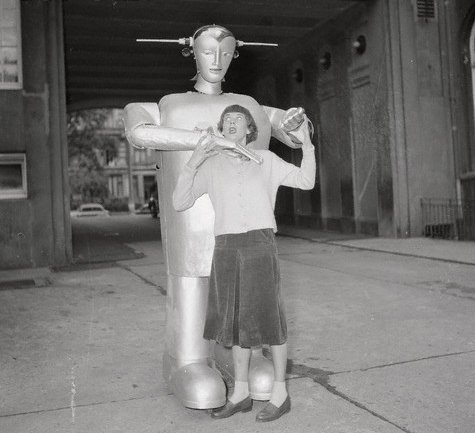
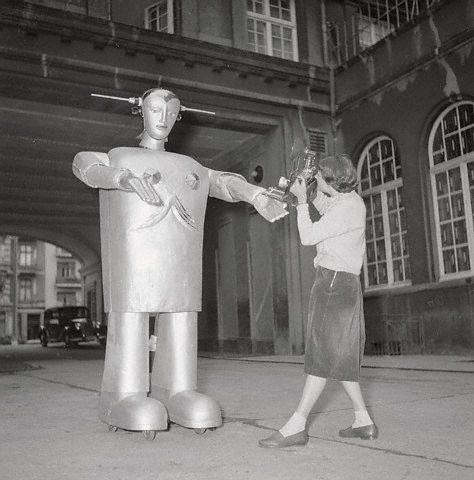
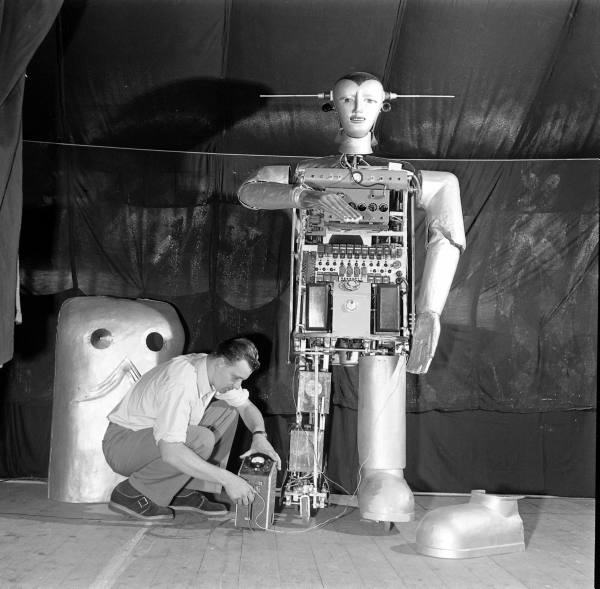
SABOR V with Peter Steuer getting his batteries charged ready for a show at Hamburg , Germany in 1952.
These pictures are from a larger collection from LIFE magazine.

SABOR's head carried separately inside the transport vehicle.

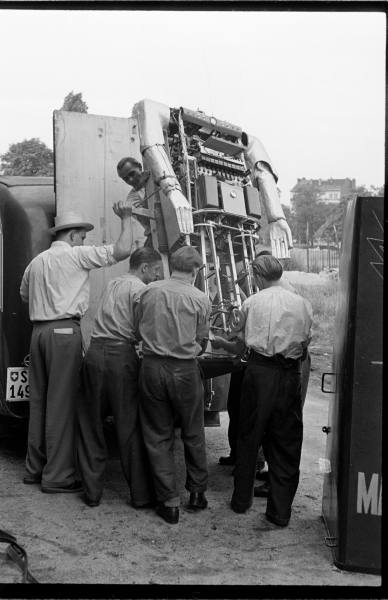
SABOR V being unloaded from the back of the transport vehicle. He was carried vertically on the rear of the van. You can just see the removable cover on the righthand side of the image.
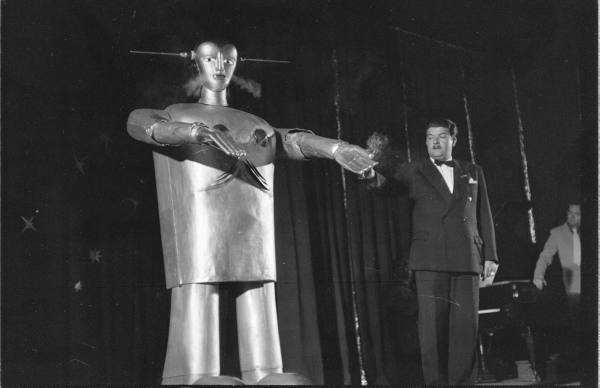
Bobby Lugano (pictured?) took SABOR V all around Europe, usually in Steuer's absence, and appeared on the television and at other public events. Bobby Lugano (aged 34) was a Magician and Conferencier from Vienna and Paul Watensperger was his behind-the-scenes assistant. In this image we see SABOR smoking. A strange method in that the cigarette is held in the hand, the hand is usually moved to his mouth, then exhales through his nose. In reality, there is a bellows inside SABOR and a rubber tube from the hand to the bellows to the nose.
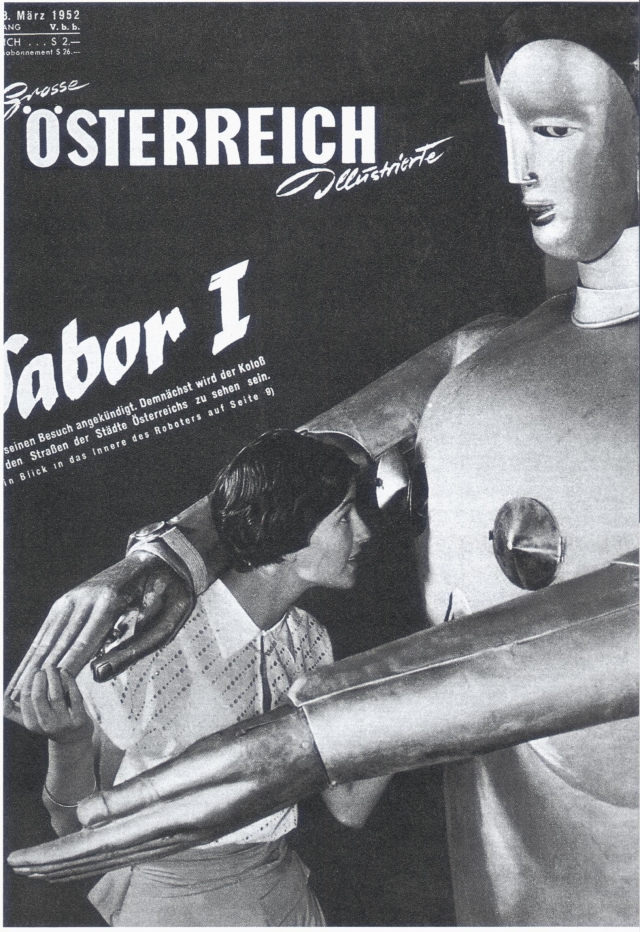

SABOR V in HAMBURG, 1952, with Paul Watensperger (age 29, from Basel) at the remote controls.
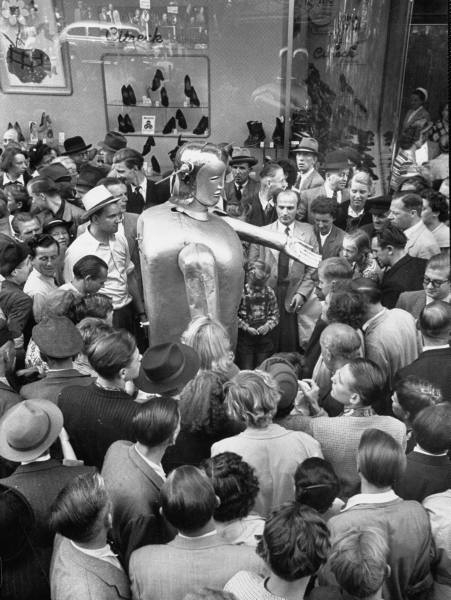
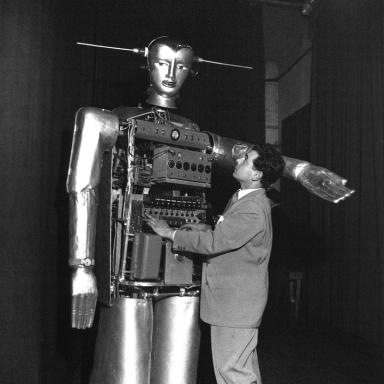
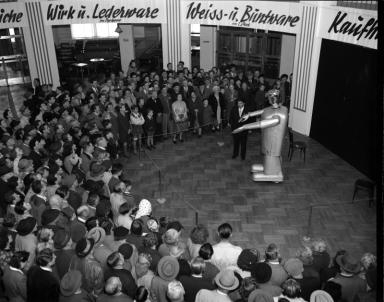
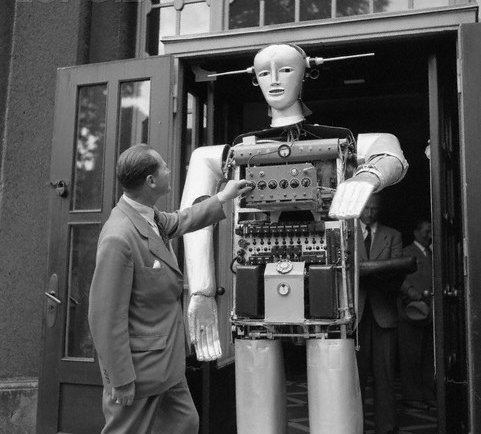
SABOR V, the media called him "Louis" for his 1954 tour. The person in front is possibly Paul Watensperger.
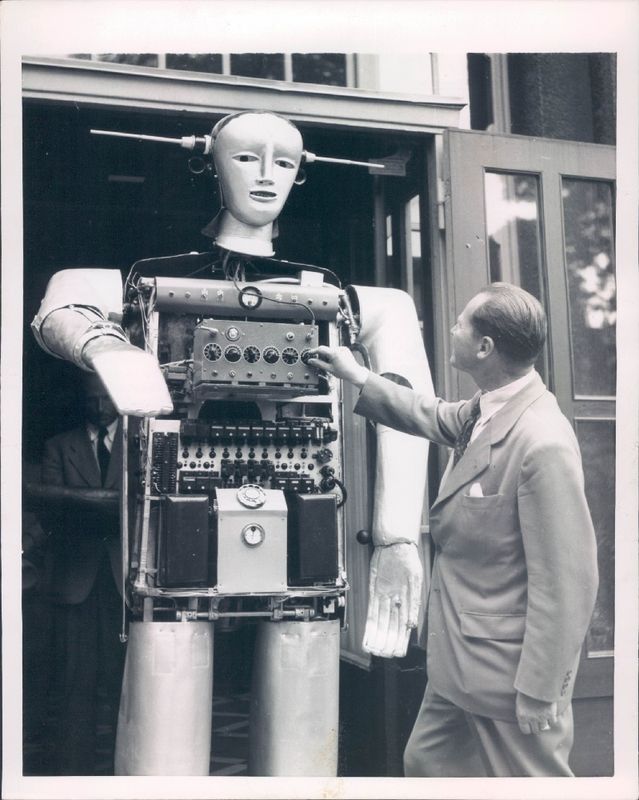
Above: Photographed in Hamburg, Germany on the 10 Aug 1952.

Paul Watensperger commanded Sabor by a short-wave radio channel. Under the system of telephone pulses using a 1 to 0 , from the dial electric signals generated on the short wave base-station and transmitted to Sabor to a phone center – housed in the chest – and activated a relay system to trigger the reactions of the robot.
There are theoretically 24 movement possibilities and can be combined with each other. Hands are usually combinations of three or four basic movements. Sabors basic movements come close to a persons. He can move
* Back and forth,
* Sideways,
* Lift the arms,
* Bend the arms,
* Rotate the head,
* Nod the head,
* Move the lips.
Only on stages does Sabor still have a serious worry: he has no knees. And instead of shoe with soles, he tramples around in the open on three small wheels, one in the toe of the foot and two at the back, so Sabor rolls with a walking movement. The legs also lack knee joints.
The Metropolis-show advertising Sabor announced as "the first robot. … Without the direct monitoring by human movement".
Its cruising speed is 2.5 kilometers per hour.
If Sabor speaks, he moves his mouth while in rhythm with the voice, but Sabors voice is the voice of his master, which consists of a short-wave loudspeakers in the inside of the body of the robot. The speaker is on relays with the movement of the lips mechanism coupled to the electric shocks of consonants responded folding system of the lips.
The following effects are necessary for exhibition purposes. Sabor can, for example,
* Blink the eyelids,
* Fire a revolver,
* Offer a light for a cigarette, and finally
* Smoke a cigarette.
The robot, however, smokes strangly. He raises his hand with the cigarette to the mouth and blows the smoke from the nose, but in reality it sucks the smoke – but no one sees – from the hand, up the arm to the nose and blowing it out.

VIDEO CLIP

Gaumont Pathe Archives have a 1952 video of this version of SABOR V. You have to be registered (free) and logged in to see the preview. Search for "1952 28 8".
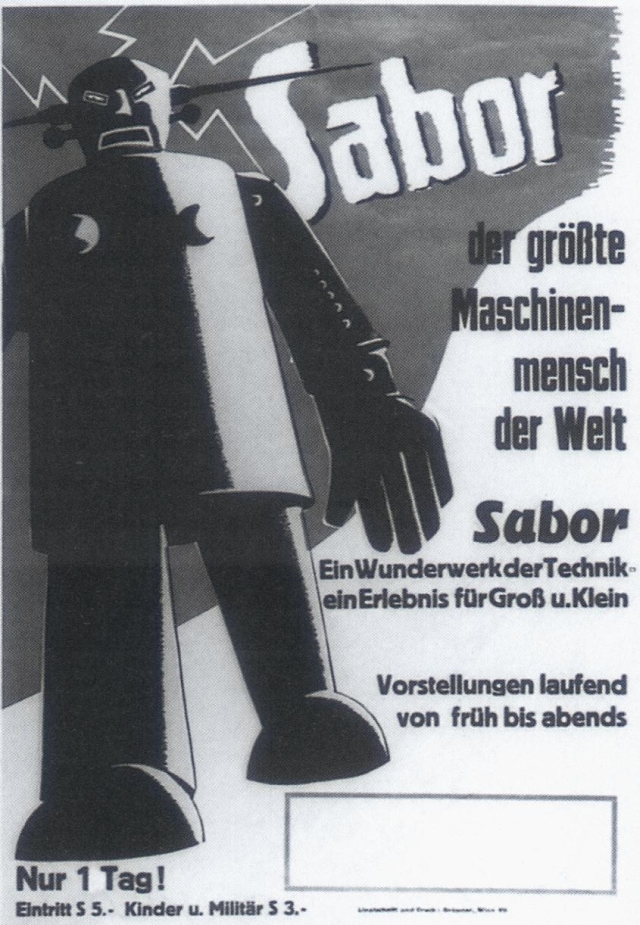
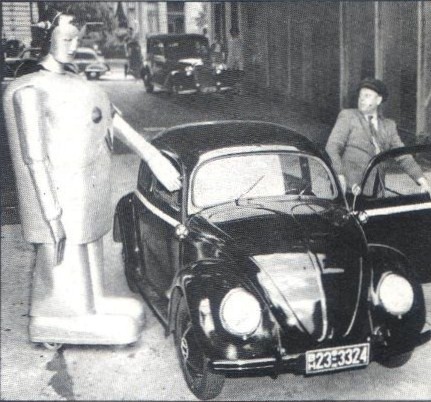

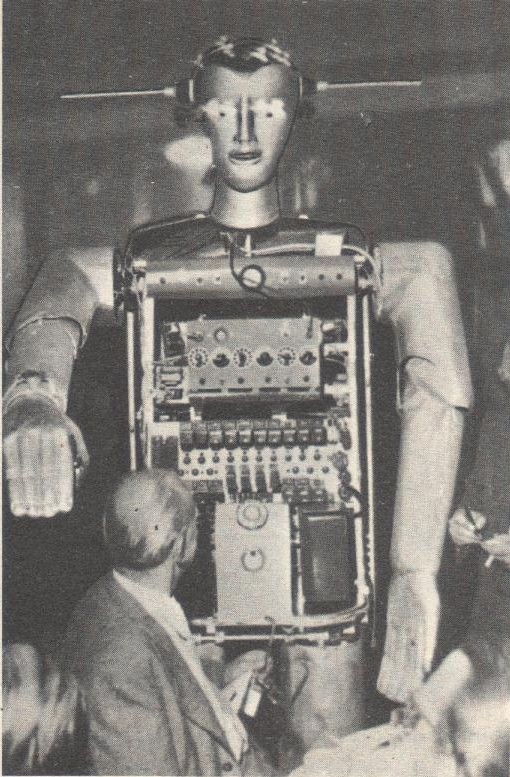
August Huber was the owner of a well-flourishing textile business, and although SABOR V had passed control to Steuer, Huber was looking to finance another robot, called SABINE, and SABINE was be be an artificial rope dancer, being capable of riding a unicycle on a tightrope. Huber got as far as designing it on paper.
SABOR's compared – Huber's earlier 1938 SABOR IV on the left, followed by the modifications made by Peter Steuer for SABOR V , then the modifications by Eric Lanz. The far right shows the same internals of SABOR V as modified by Lanz, but externally made to look like an astronaut, and called "Orbitus" at the time. Mechanically, SABOR stayed the same.
Externally, SABOR IV is identified by his lack of eye-brows, but more specifically the shorter antennae, being for the ultra-short-wave radio transmitter/receiver. The earlier version of SABOR V externally has a battered body, no eye-brows, and a metal neck, not mesh like the later model.
See SABOR V later version here.